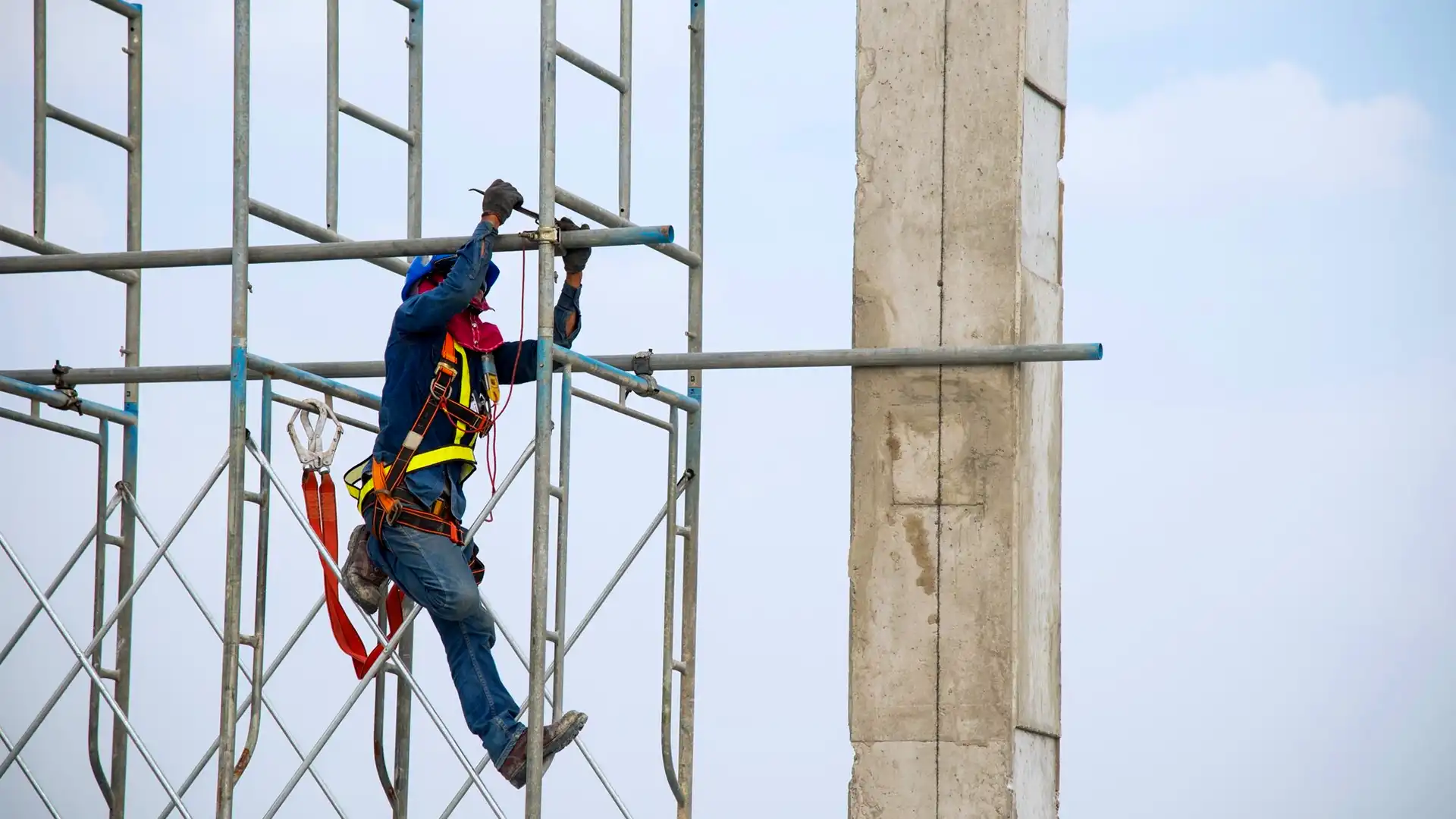Working at heights carries significant risks, where even a minor error can lead to severe consequences. This is where the double leg lanyard becomes essential—not just a piece of equipment, but a critical lifeline. Indispensable in high-risk industries such as construction, energy, and telecommunications, this system minimizes fall risks while maintaining freedom of movement.
What is a Double Leg Lanyard?
A double leg lanyard is a fall arrest system equipped with two separate connection arms. This design ensures that users remain securely attached to at least one anchor point at all times. It allows seamless transitions between anchor points, creating a consistently safe working environment.
How Does It Work?
- Connection Arms: The two arms operate independently, enabling one to remain connected while the other is released, allowing users to transition to an optimized anchor point.
- Energy Absorbers: In the event of a fall, the energy-absorbing mechanism activates, reducing force and minimizing injury risk.
- Hook Connection: High-quality hooks ensure secure locking, even during rapid transitions.
When Should It Be Used?
Construction and Installation Work
Project sites require constant movement. From platforms to machinery or varying heights, double leg lanyards provide uninterrupted protection.
Energy Field Operations
Height transitions are common in tasks involving utility poles, transformer installations, or wind turbines. This system eliminates the risk of disconnection.
Harsh Environmental Conditions
In environments with heat or spark risks, models like the EKS-240, with heat-resistant polyester construction, enhance safety.
Advantages and Technical Features
Continuous Safety
The dual-arm design ensures users are never unprotected, significantly reducing the risk of anatomical injuries during a fall.
Energy Absorber Performance
The energy-absorbing system mitigates fall forces, balancing the load on the body, which is critical during sudden falls.
Durable Materials
Manufactured by EKS Work Safety, these models comply with EN 355, EN 354, and EN 362 standards, offering high strength and reliability.
Ergonomic Design
Hooks lock quickly, and suspension systems provide comfort, with designs that minimize user fatigue.
Proper Usage Guide
To avoid common mistakes with double leg lanyards, this guide outlines key steps for safe use.
Preparation
- Inspect the lanyard for physical integrity: check for tears, abrasions, or burns.
- Verify that the energy absorber is intact and unopened.
- Ensure hooks are functioning correctly.
Connection Process
- Secure the first arm to an anchor point.
- Attach the second arm to a new anchor point to maintain continuous connection.
- Confirm both hooks are locked and secure.
Safety During Transitions
- Ensure one arm remains securely attached while disconnecting the other.
- Pause during transitions to reconnect to the new anchor point.
- Verify that hooks are fully closed.
Post-Use Maintenance
- Clean components with a damp cloth, avoiding exposure to corrosive substances.
- Schedule professional maintenance checks every six months.
- Conduct visual and manual inspections, replacing damaged equipment immediately.
Key Features of Double Leg Lanyard Models
Energy Absorber Types
- Passive: Automatically deploys during a fall.
- Active: Triggers under specific load conditions set by the manufacturer.
Materials and Length
- Constructed from polyester, polyamide, or hybrid materials.
- Standard lengths range from 1.2 to 2 meters.
Hook Types
- Screw or automatic locking hooks, selected based on usage scenarios.
- Node-certified models (e.g., ‘Modul D’) are recommended.
Four Critical Points for Double Leg Lanyard Use
- Continuous Inspection: Ensure anchor points are clear and secure.
- Transition Safety: At least one arm must remain connected during transitions.
- Maintenance Schedule: Damaged equipment poses risks and must be replaced promptly.
- Training Requirement: Trained users reduce accident rates by 85%.
A Safer Future with EKS Work Safety
As a specialized manufacturer of work safety equipment, EKS Work Safety excels with its double leg lanyards. Quality, durability, and user-friendly designs define these products. This guide provides new users with a safe starting point, while EKS Work Safety’s solutions make working at heights safer and more efficient.
You can visit our LinkedIn page for more.



 by
by